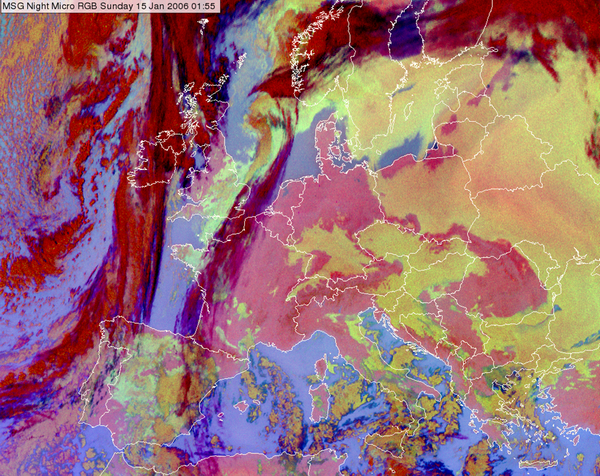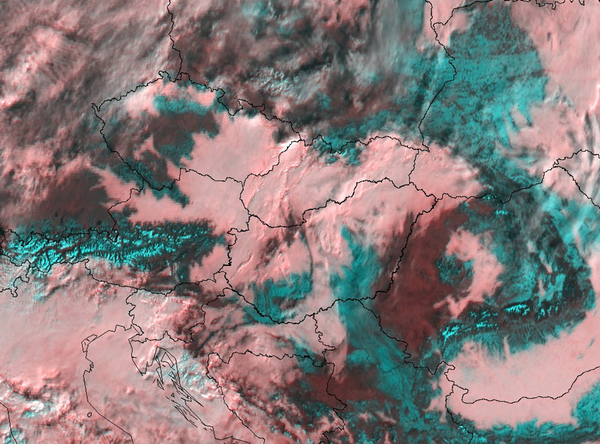Chapter VI: Summary
Table of Contents
- Chapter VI: Summary
- Summary according to the RGB types
- Summary according to the applications
Summary according to the RGB types
| Snow RGB | |
| Daytime RGB to monitor snow and to monitor low clouds or fog over snow. | |
 |
|
| Night Microphysics RGB | |
| Nighttime RGB to monitor low clouds and fogs, to separate them from cloud-free surface. | |
 |
|
| Ash RGB | |
| RGB can be used day & night. Similar to Dust RGB, but tuned for volcanic ash and SO2 gas plume detection. | |
 |
|
Summary according to the applications
| Full cloud analysis | |
|
During daytime:
|
During nighttime:
|
| Cyclogenesis | |
|
The stratospheric dry air protruding down is a signal for cyclogenesis. It can be best seen with the Airmass RGB having WV6.2, WV7.3 and IR9.7 (ozone channel) in it. During day and nighttime:
|
|
| Convection | |
The microphysics of the cells helps to identify thunderstorms with severe updrafts. The HRV Cloud RGB provides information about the cloud top features in good spatial resolution. | |
|
During daytime
|
During nighttime:
|
| Low clouds and fog | |
|
During daytime
|
During nighttime
|
| Atmospheric particles and trace gases | |
|
Dust clouds:
|
|
|
Volcanic ash clouds:
|
|
|
Volcanic SO2 gas plumes:
|
|
| Land applications | |
|
Snow:
|
|
|
Floods:
|
|
|
Vegetation:
|
|
|
Forest Fires: The IR3.9 channel is the most sensitive SEVIRI channel to sub-pixel sized fires. |
|
|
During daytime:
|
During nighttime:
|
